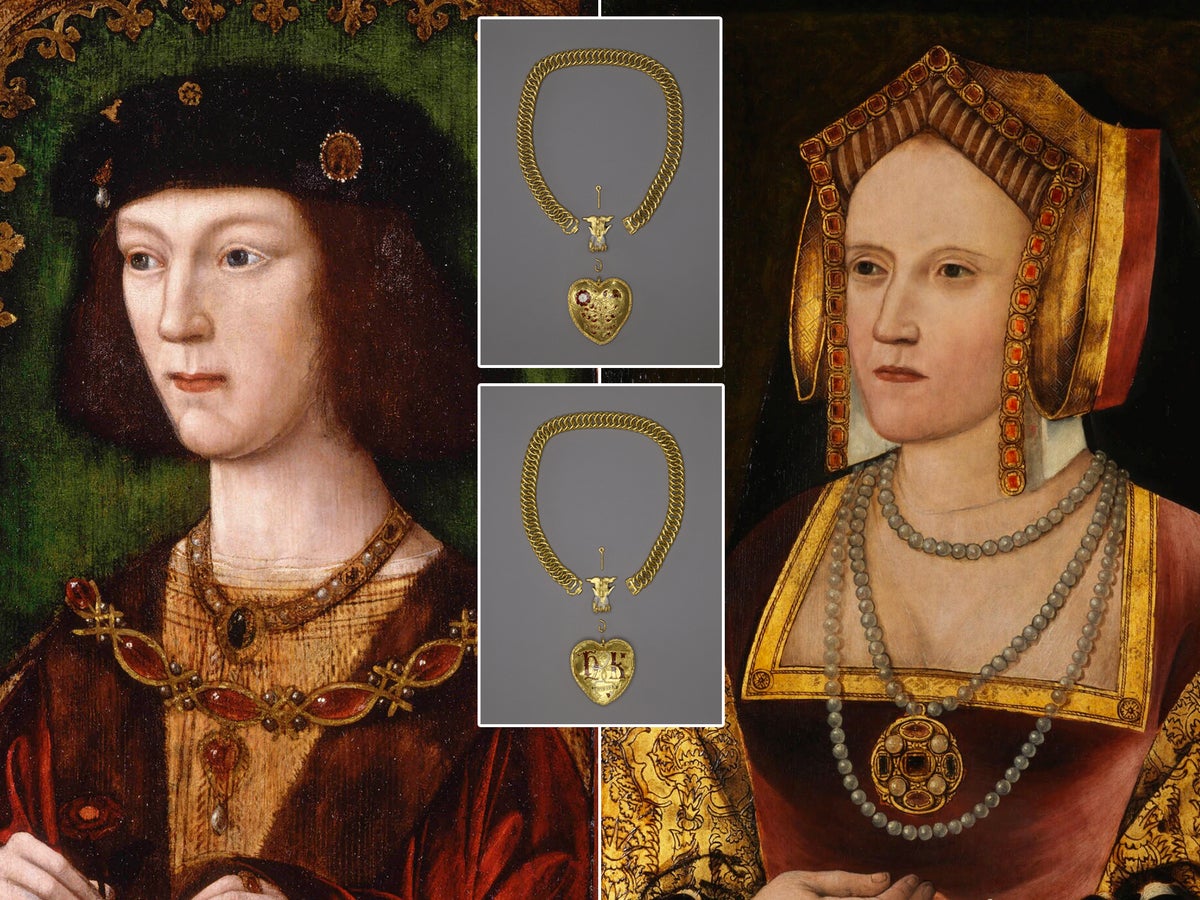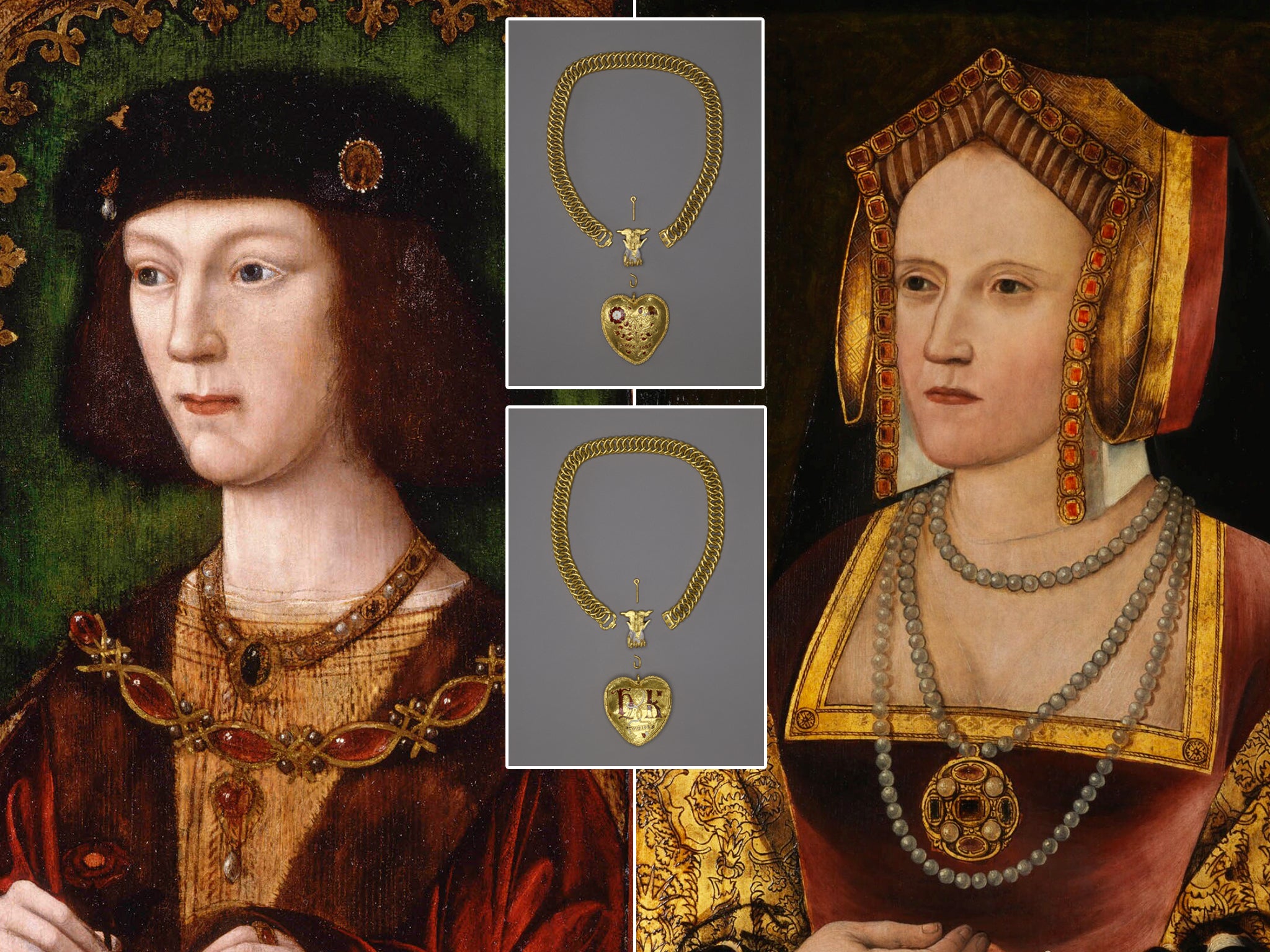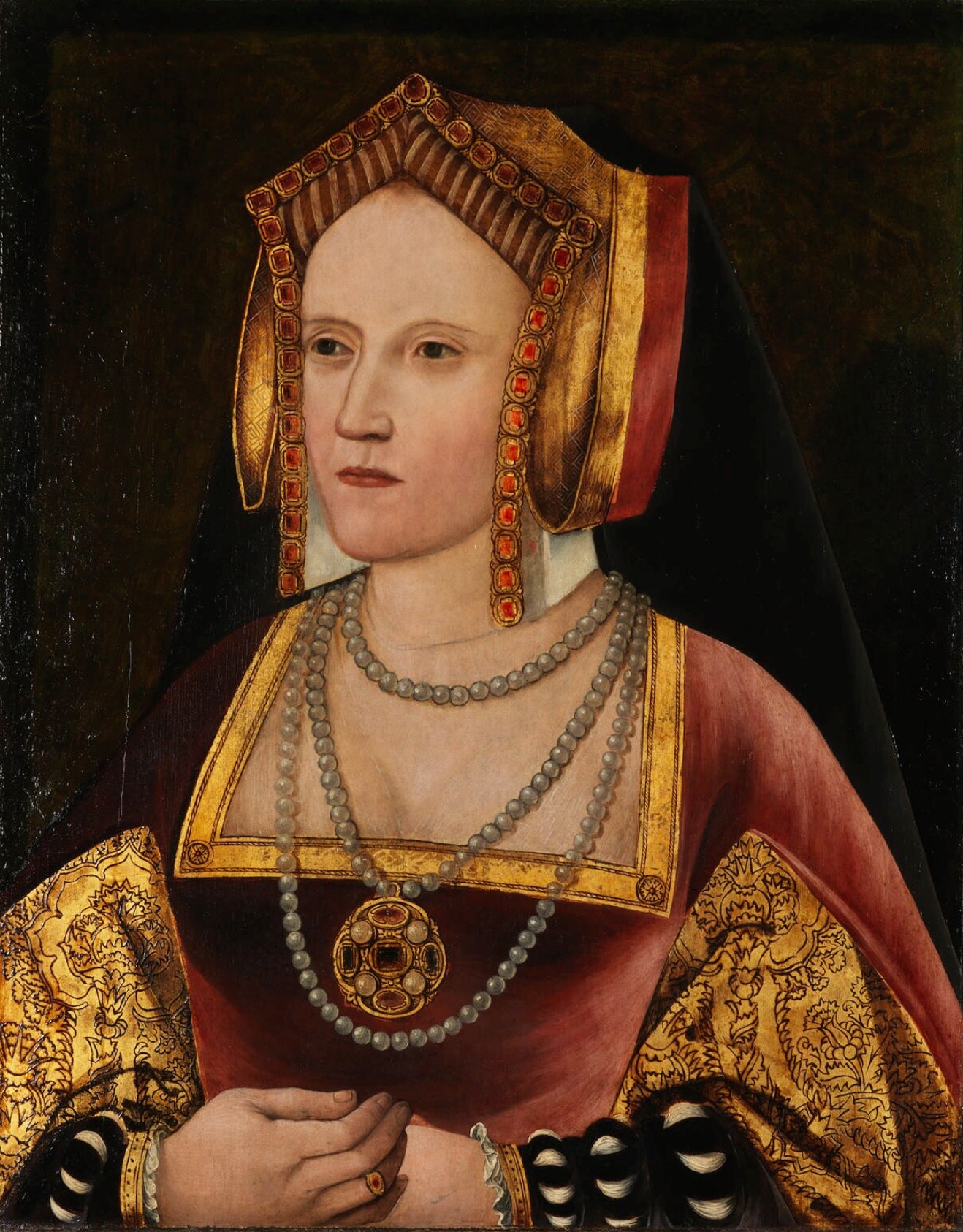
An extraordinary piece of gold jewellery linked to Henry VIII has been discovered by a metal detectorist in a field in the Midlands.
The object – a heart-shaped gold pendant attached to a gold chain – promises to be of great historical significance.
However, for the time being, its story is a tantalising mystery.
It bears the initials and symbols of the Tudor monarch and his first wife Katherine of Aragon – but it’s not yet known whether it originally belonged to the king or to Katherine or to one of the king’s friends or courtiers.
However, one possibility is that it may have been presented by Katherine to the king as a tournament prize, immediately after a major jousting tournament at the royal palace of Westminster in 1511 in which he was the star participant.
The heart symbol (represented by the shape of the gold pendant) was used to adorn Henry’s horse at that specific event as were Henry and Katherine’s initials.
Symbols of the heart were threaded throughout the royal Westminster event, with Henry jousting in mock disguise under the French pseudonym “Sir Cuer Loyall” (Sir Loyal Heart) – a reference to his love for and loyalty to his wife, Katherine, who had just given birth to a son, Prince Henry.


Indeed, the entire tournament was arranged to celebrate that politically and personally crucial royal birth.
The use of hearts for jewellery in early Tudor times was relatively rare – so it is conceivable that the heart-shaped pendant did indeed originate at that very special tournament.
If that was the case, the artefact, in a sense, represents a very significant political phenomenon in 16th-century England – namely the Tudor royal need for political stability and the consequent perceived royal requirement for a male heir.
For Henry, the stability of a male heir was important because England had, only a generation earlier, emerged from more than 30 years of bitter and bloody dynastic conflict, the Wars of the Roses.

But in an indirect sense, that celebratory tournament (and thus potentially also the gold pendant and silver chain) ultimately links into the even greater political phenomenon that flowed from Henry’s need for a male heir - namely the English Reformation itself.
That’s because, tragically, Henry and Katherine’s newborn son died just a few weeks after the tournament had been held and, ultimately, it was his death (and Katherine’s subsequent failure to produce a male replacement) that, years later, led to Henry’s wish to divorce her (and marry Anne Boleyn). A divorce that caused the break with Rome and Catholicism and the birth of England’s Reformation (one of the most transformative events in British history).
But the gold pendant – found by a metal detectorist in Warwickshire – more immediately symbolised another one of Henry’s obsessions: his love for medieval-style French-influenced concepts of chivalry, romances and courtly love.
Significantly, the heart symbol and the use of French words in both the 1511 tournament and on the gold pendant, are almost certainly inspired by French-influenced chivalric ideas found in literary romances, including those about King Arthur (a legendary ‘royal predecessor’ who Henry was very keen to identify himself with).
Whether or not the gold pendant is connected to the 1511 celebratory tournament (and thus to the birth of the ill-fated infant Prince Henry) is, of course, not known for sure.
But an even greater mystery is how the gold pendant and its gold chain ended up in a field in the Midlands.
In Tudor times, the find site would have been open woodland which formed part of a large estate.

If Katherine had given the artefact to her husband to help celebrate the birth of their son, Henry would almost certainly not have wished to wear or display it after Prince Henry’s death.
It’s conceivable therefore that he gave it as a gift to one of his courtiers.
And if the object had originally been manufactured as a gift from Henry or Katherine to a courtier (or perhaps even to a member of Henry’s 1511 jousting team), the recipient might likewise not have wished to wear it at court.
But how did its owner come to lose such a high status and valuable item?

It’s possible that it was lost by a nobleman, while out hunting or riding – but the chain is intact and very heavy and it’s hard to imagine it falling from around a person’s neck.
Perhaps a more likely scenario is that it was potentially stolen - and that the thief or robber dropped it or hid it while fleeing his pursuers.
Certainly highway robbery was a major problem in the countryside in Tudor England. Indeed one 16th-century clergyman wrote a book in which he claimed that highway robbers employed spies in roadside inns, gathering intelligence as to which travellers were worth robbing.
Over recent months the artefact has been examined by experts at the British Museum. What’s more, archaeologists have already investigated the find site and its immediate environs but found no additional clues.

However, additional research into the find is planned over the next several years.
Historians and archaeologists are hoping that future research will begin to solve at least some of the mysteries surrounding this enigmatic treasure.
The artefact was discovered by a metal detectorist, Charlie Clarke, who reported it to the UK’s antiquities reporting service, the Portable Antiquities Scheme (PAS).
Description of the necklace
The 317g mainly gold object is unique. It consists of a 43cm long gold chain (composed of 75 large gold links), an enamel clasp (in the form of a hand) and a heart-shaped gold pendant (in the form of a hinged locket), with two romantic inscriptions (in 16th-century French), both of which say “Tousjors” (”Alway”). The gold is 23 or 24 carat. Originally the pendant may well have contained a personal item like a lock of hair or a tiny fragment of clothing. At jousting tournaments, contestants would often receive gifts from high-status female admirers at the event. As well as the romantic inscriptions, the pendant is decorated with Henry and Katherine’s initials (portrayed as being tied together by a love knot), Katherine’s symbol (a pomegranate) and Henry’s dynastic symbol (a double-headed white and red rose) represent the coming together of the English royal houses of York and Lancaster
Michael Lewis, head of PAS and Treasure at the British Museum, said that the pendant is helping to "transform our knowledge of Britain’s past”.
“Previously unknown potentially royal artefacts from the 16th century are very rare – and can give us important new insights into life at the top of Tudor society,” said a biographer of Henry VIII, Dr Lucy Wooding, author of the most recent major book on the period, Tudor England: A History.
Duncan Wilson, chief executive of Historic England, said that the artefact is "a thrilling discovery giving us a tangible connection to Henry VIII and Katherine of Aragon” that “enriches our understanding of the Royal Court at the time”.







